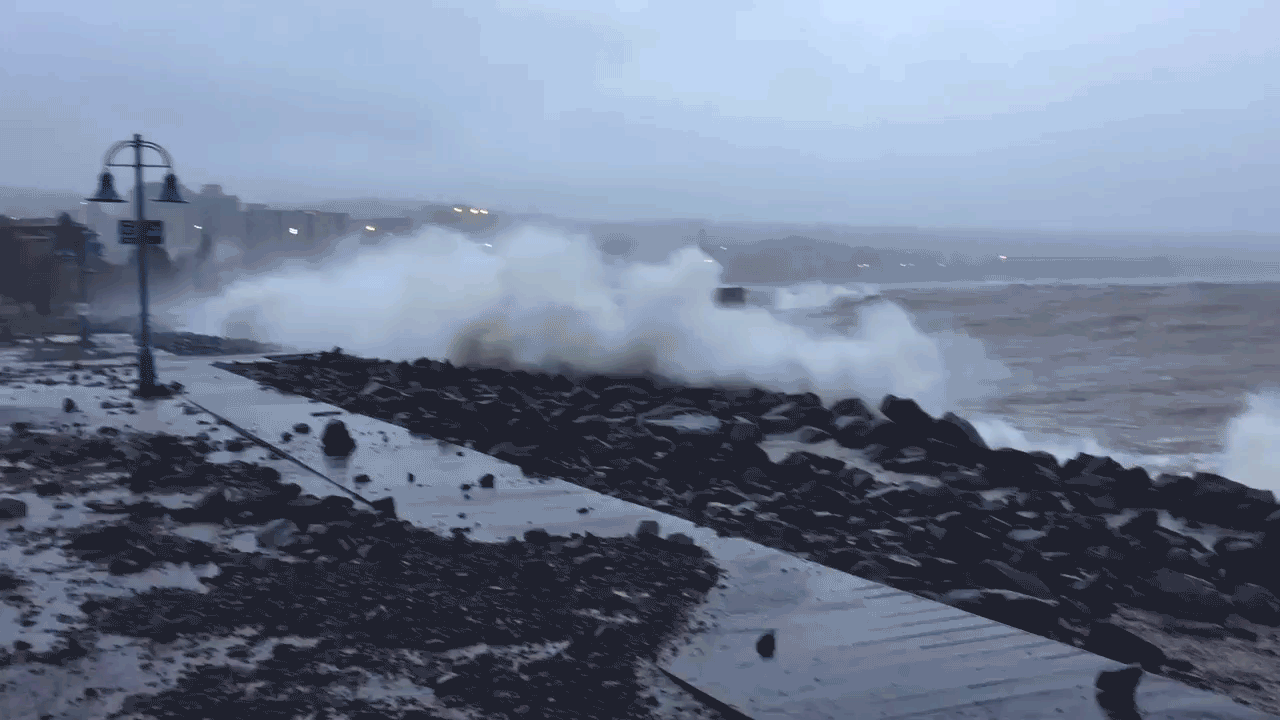Duluth celebrates $8 million grant to rebuild part of Lakewalk

Go Deeper.
Create an account or log in to save stories.
Like this?
Thanks for liking this story! We have added it to a list of your favorite stories.
Duluth officials are celebrating a nearly $8.2 million federal grant that will help rebuild another section of the city’s popular Lakewalk pedestrian and bike trail that hugs several miles of the Lake Superior shore.
A series of storms in 2017 and 2018 battered the trail, ripping up pavement, strewing huge boulders across the path and eroding the shoreline.
Record-high water levels in the Great Lakes, combined with gale force winds that created giant waves on Lake Superior, caused tens of millions of dollars of damage to the Lakewalk, resulting in state and federal emergency declarations.
Duluth has already rebuilt several sections of the trail, including a massive project along the city’s Canal Park tourism district that features an engineered wall of giant boulders, some as large as 12 tons, that slopes into the water behind a row of hotels and restaurants.
Turn Up Your Support
MPR News helps you turn down the noise and build shared understanding. Turn up your support for this public resource and keep trusted journalism accessible to all.

New two-and-a-half mile rebuild
This new funding from the U.S. Department of Transportation will help rebuild the most-used section of the Lakewalk, a two and a half mile stretch that extends farther up the lakeshore, past Leif Erikson Park and the city’s Rose Garden, to 26th Avenue East.
“This is a grant that is specifically focused on increasing connectivity, decreasing barriers of access and linking the most incredible natural resource we have with our most important economic development assets behind it,” said Duluth Mayor Emily Larson.
Duluth is responsible for 20 percent of the project’s cost, about $2 million. The project is also intended to improve accessibility, said Jim Filby Williams, Duluth’s director of properties, parks and libraries.
“All of the wheelchair barriers, of which there are a number right now, will be eliminated. All of the areas where the the trail is crumbling in, or at risk of crumbling into the lake, will be stabilized. The places where we see some safety issues will be improved by having wider trails, more separation between bikes and pedestrians.”
The grant will help build a more resilient Lakewalk, said Filby Williams. Much of that will be done by relocating the trail farther from the bluff. There are some places where the trail will be reconstructed, “but it’s not nearly so obtrusive as the stone armoring at Canal Park,” he said.
The city expects the project to begin in the fall of 2024 and wrap up the following year.

More work coming
Other projects to rebuild and fortify areas of the lakeshore damaged by past storms are also moving forward.
A redesign of Brighton Beach park is continuing this summer, where the Lakewalk has been extended, and the road is being moved farther inland to better protect it from future storms.
The city is also planning to reconstruct a section of deteriorated seawall behind the Duluth Economic and Convention Center, or DECC. That project is expected to be put out for bid next week.
“Every bit of public shoreline from Bayfront Park all the way to Brighton Beach will, as of 2025, have been reconstructed to be more resilient, safe and accessible,” said Filby Williams.
The Lakewalk grant is part of the USDOT’s Rebuilding American Infrastructure with Sustainability and Equity, or RAISE program, part of the 2021 federal infrastructure law.
Duluth also recently received a $25 million RAISE grant to help rebuild a section of Superior Street through its Lincoln Park neighborhood, which could include the creation of a renewable energy district fueled by leftover heat from a nearby wastewater treatment plant.
Senator Amy Klobuchar, who visited Duluth to announce the grant funding, said the restored Lakewalk will help build resilience from climate change.
“It’s not just evidence from the forest fires up in Canada. But it’s also in what happens with our lakes. And so making sure that we have resilient infrastructure is a big part of this.”



